Package Editor
7 minute read
Create Package
Use the Connect area to create and manage Docusnap Connect Packages. This area can be accessed via the navigation bar.
Create New Package
Click on the New button to create a new Docusnap Connect package. The title, text German and text English are then filled in and the data saved.
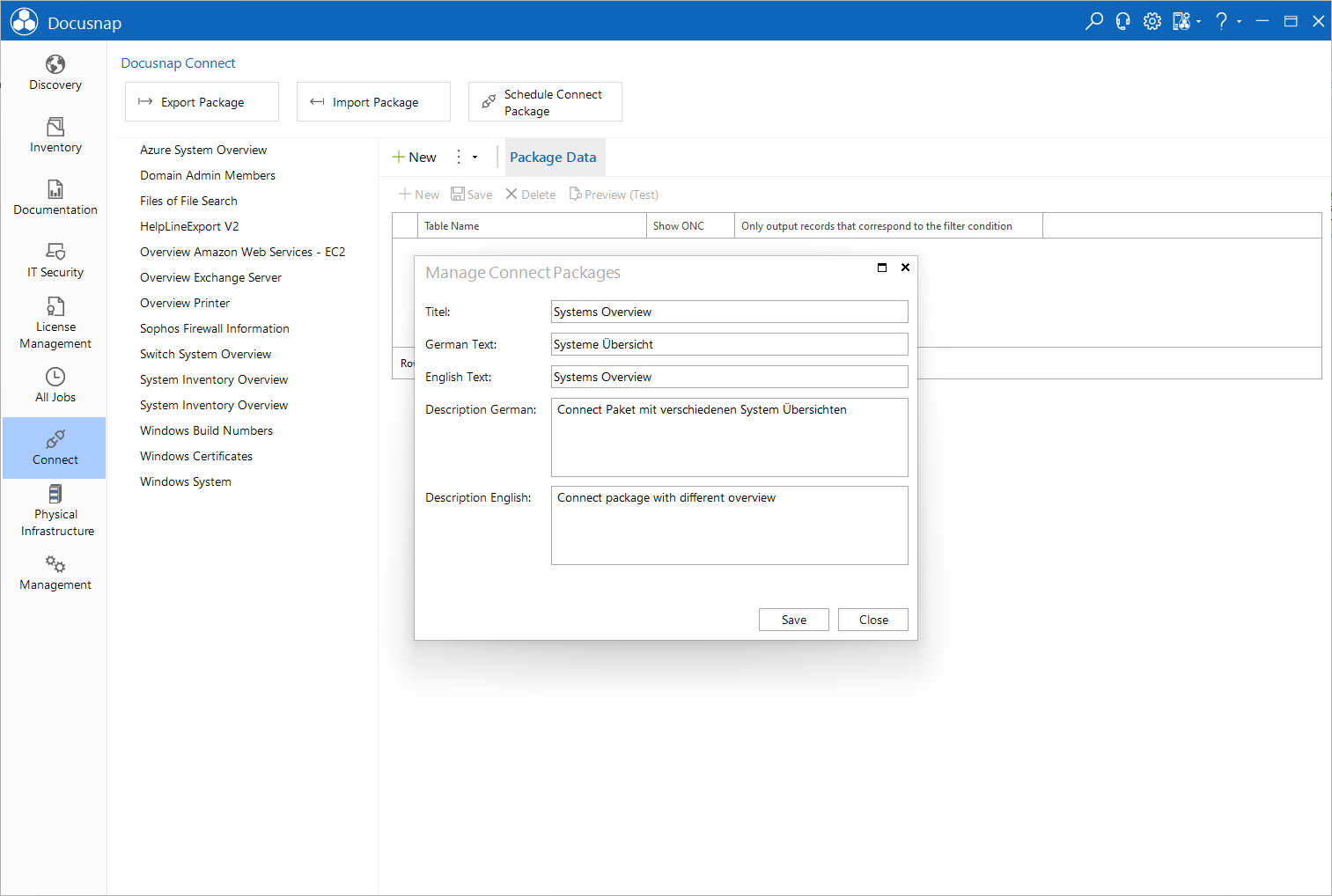
In the Table Name list all already defined tables are displayed. When you first open a package an empty table is already created. Enter the name to be assigned to the table after the export in the Table Name field.
Docusnap Object
The objects containing the data to be exported must be selected. By clicking on Add Docusnap Objects the already known tree structure is displayed and allows navigation and selection of the information.
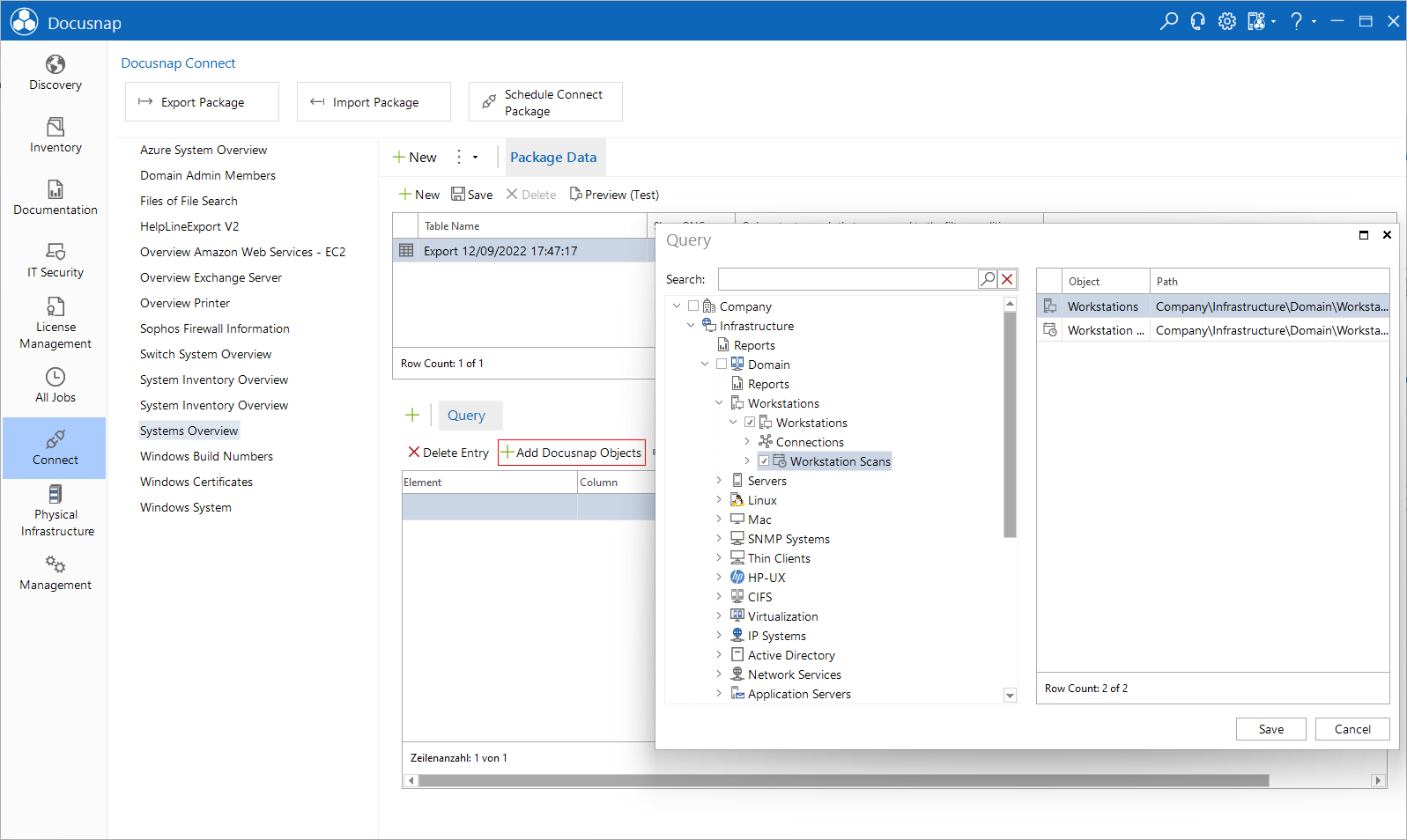
- Element: In the Element combobox, select the object whose data you want to export.
- Column: By double-clicking a field in the Column list, you can display the columns of the selected object. Select the desired column there. If you no longer need a column, you can remove it by selecting the line and either click the Delete button or press the Del key on your keyboard.
- Alias: In the Alias column, you can specify the name of the column in the exported table. Each name in the Alias column must be unique.
- Display: If you enable the Display checkbox, the column will be displayed in the exported table. By disabling it, you can hide fields that are only used for data filtering.
- Use Reference: For columns with a reference specified, the reference can be added to the export. If you enable the Use Reference checkbox, the number in the column will be replaced with the corresponding reference text. When exporting, you can select the language in which you want the reference to appear.
- Grouping: Here, you can select whether the respective column will be used for grouping or whether to calculate the count, maximum, minimum, sum, or average of the column.
- Sort Order: Using the Sort Order column, you can define the column order.
- Filter: Here, you can enter any valid SQL condition (e.g. = 1). To hide the column used for filtering, you can disable the Display checkbox for this column. The clause can further be extended by additional fields or conditions. The filter can only address another column by using the alias. This must be specified with {Alias:Aliasname of column}.
- Only output records that correspond to the filter condition: This option is set directly at the table. This option determines whether data is only displayed if there is corresponding data in all specified nodes. If this option is not activated and, for example, for workstations the inventoried printers should be listed, then workstations for which no printer was found will also be included. If the option is activated, only workstations for which a printer was inventoried are listed in this example. This option is especially needed if a grouping is used and a filter is applied to it. In order for the specified filter to be applied to all data, the option must be enabled. Otherwise, only the data from the node will be filtered and the data from the other nodes will all be listed. For example, the latest installation date can be searched in the grouping and then filtered to list only systems whose last update was more than 90 days ago.
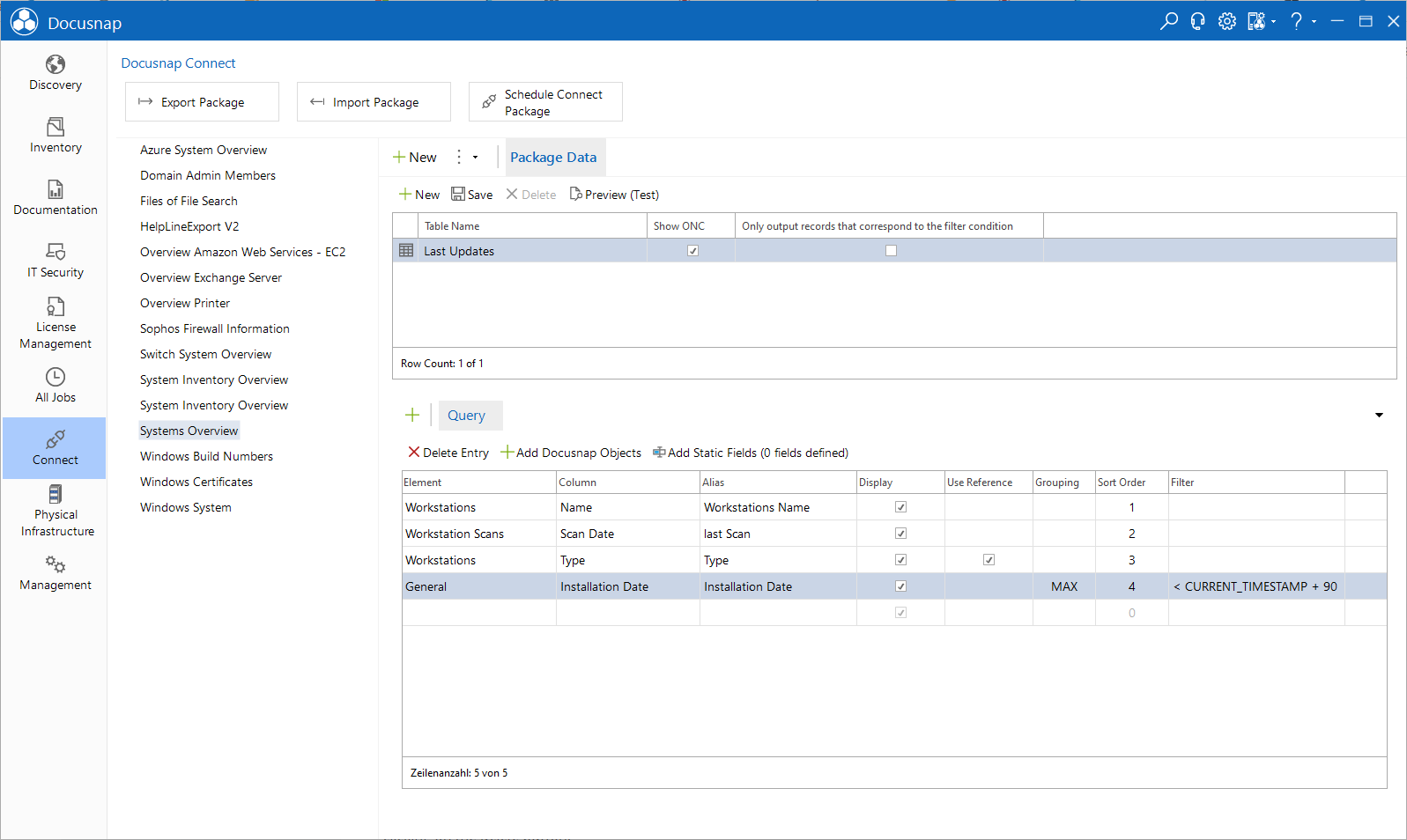
Static Fields
Static values can be exported, in addition to the values from the table. Click on the button Add Static Fields to open the dialog for the static fields. The specified name is used as the column header and the value is specified in the table. As soon as a static value is created, it is included in the export. Values that are no longer required can be removed by clicking on the Delete button.
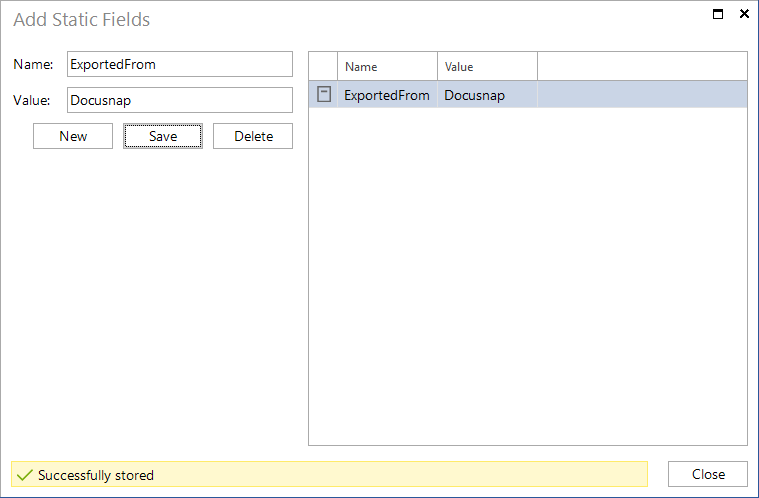
Multiple Tables
To export multiple tables, click the New button to add more tables for which the data can be configured. Click on the table name and it will be highlighted and can be edited. If you want to be able to link the data from the different tables after exporting to a database, the primary and foreign keys should also be selected.
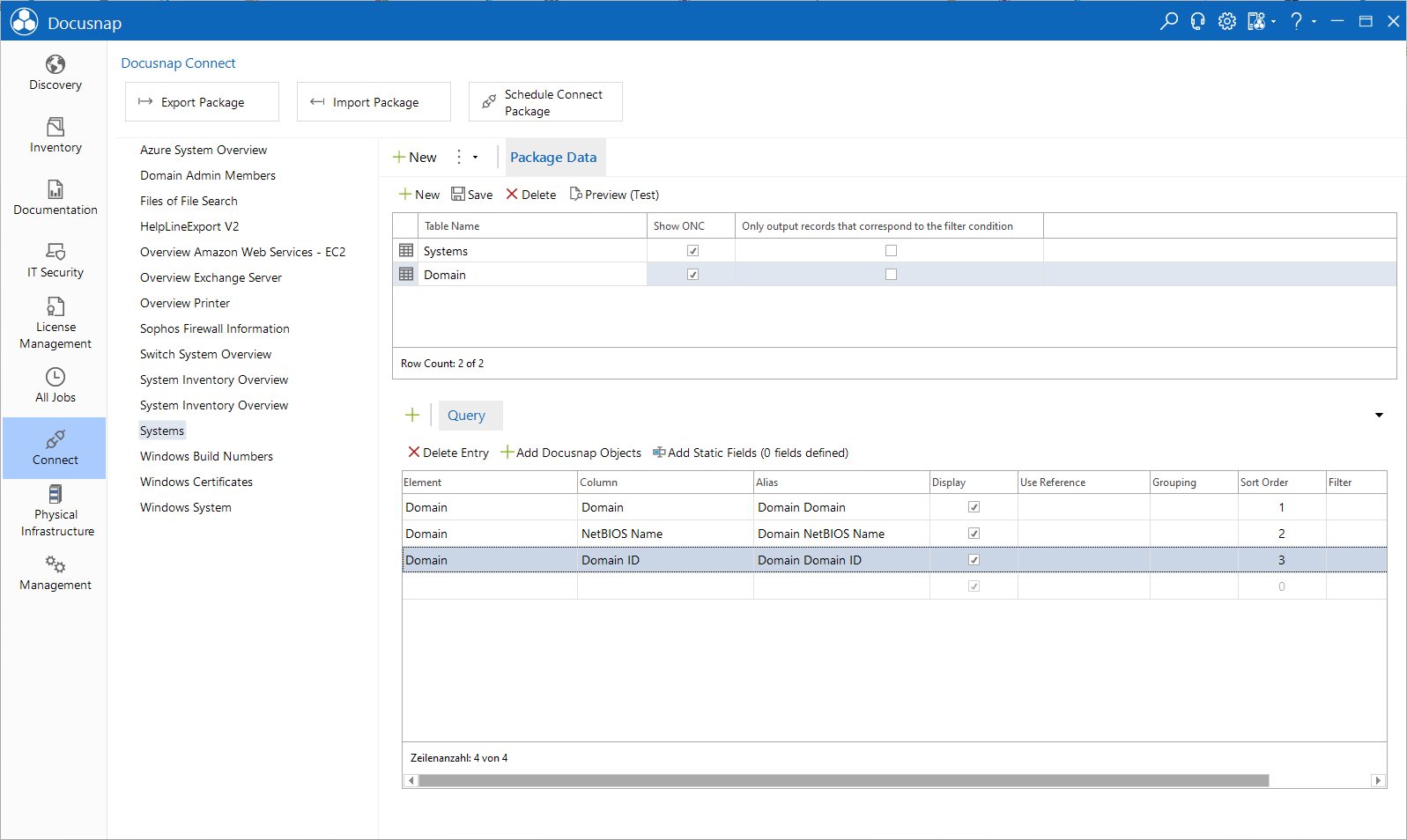
Preview (Test)
Once you have selected the tables and columns, you can click the Preview (Test) button to check the table output. By default, the first ten data rows of the table are shown in the preview. You can change this value in the Limit Data Rows to: field.
For the export, an additional column named ONC will be added to the data. This column identifies each object unambiguously so that, during an update of the SQL database, the objects can be mapped without problems. This column is also used for DocusnapLink when switching from another application to this Docusnap node.
The export time for larger amounts of data can be significantly increased due to the recursive query for the creation of the ONC. If the ONC is not needed, the output of the ONC can be deactivated with the option Show ONC for the tables to improve the performance.
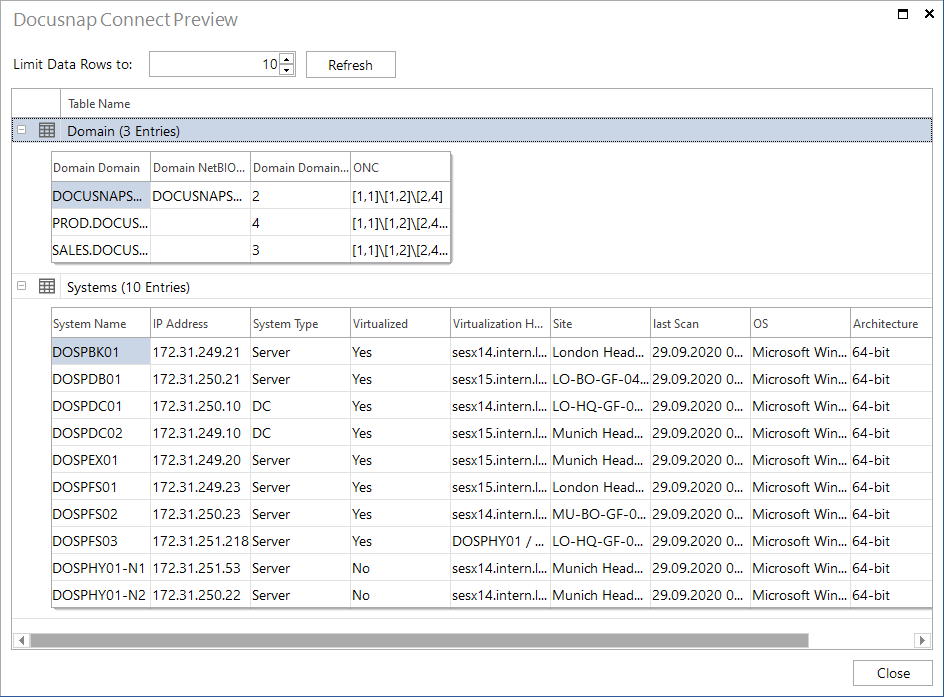
If an error occurs during the export test, it will be displayed as an error message in the lower area.
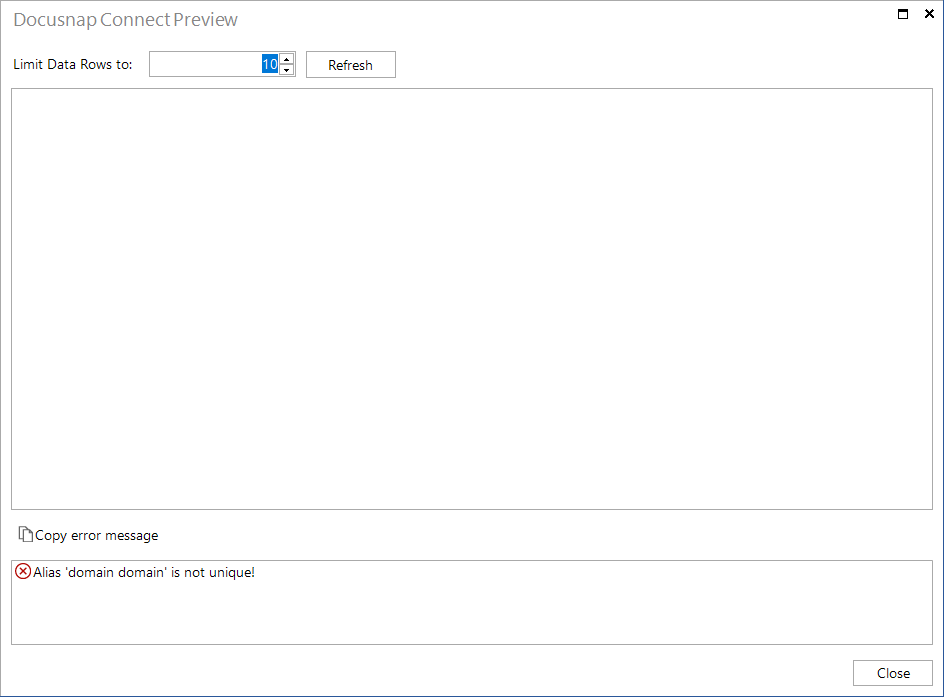
Union
At the bottom, clicking on the  button creates a union. The Union works like a union in SQL. The data from various objects is combined in one table. If the same Alias name is given for columns in the different definitions, the data is output in one column. If there is no matching Alias name in the other definition for one column, that column will be left empty for the entries in the other table.
button creates a union. The Union works like a union in SQL. The data from various objects is combined in one table. If the same Alias name is given for columns in the different definitions, the data is output in one column. If there is no matching Alias name in the other definition for one column, that column will be left empty for the entries in the other table.
For example, the union can be used to show the systems from the Workstations node and the Servers node in one table.
If a UNION column is formed from several columns, these must not use different references. The references can be initial values, references to tables, lists for IT assets, etc. It is not possible to resolve the data correctly if columns with different references are combined with the UNION into one column.
For example, if two tables that make up the UNION each have a Type column, but they are translated with two different initial values, then they cannot be displayed in the same column. To be able to include these data, they must be defined in the UNION with different alias names so that they can be displayed as two columns.
Definition for server

Definition for servers

In this example, a union was added for the node server. The same names have been assigned for the columns. This will then output the data of the two definitions like in the preview.
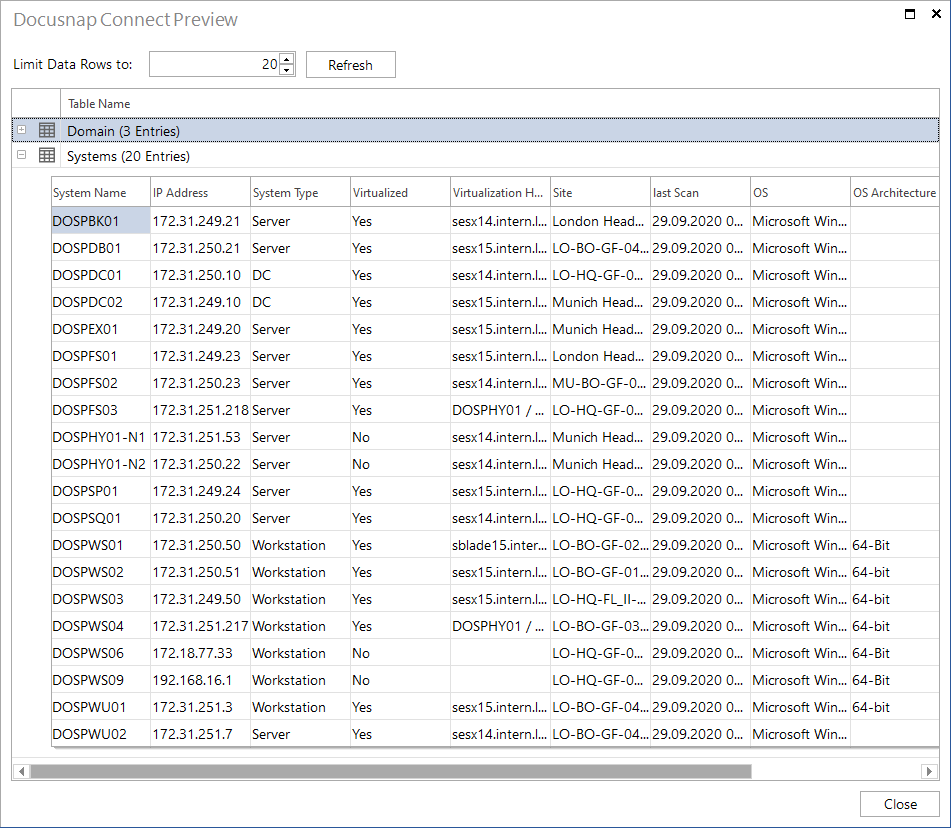
By double-clicking on  or
or  , a different name can be specified. Especially when multiple unions are used, naming the definitions makes it easier to select the right one.
, a different name can be specified. Especially when multiple unions are used, naming the definitions makes it easier to select the right one.

Customized Objects
Customized objects and tables can be exported with Docusnap Connect. If a user table has been created for which a primary key and a foreign key have been defined, this object can be exported. If this is a user-defined view from which the data is to be exported, a number of points must be observed.
The SQL statement of the view is changed during the export in order to be used for the Connect. For this reason, the column used for filtering with {FilterID} must be included in the Select part of the view. This value is then matched against the primary key of the parent object. The column must have the same name as the primary key of the parent table or view for the match to take place. For example, if a view was created with customized tables in which the column is called xAccountID and not AccountID, but this view is located below the Docusnap table tAccounts in which the primary key is called AccountID, the view in the Select part the xAccountID would have to be renamed as AccountID.